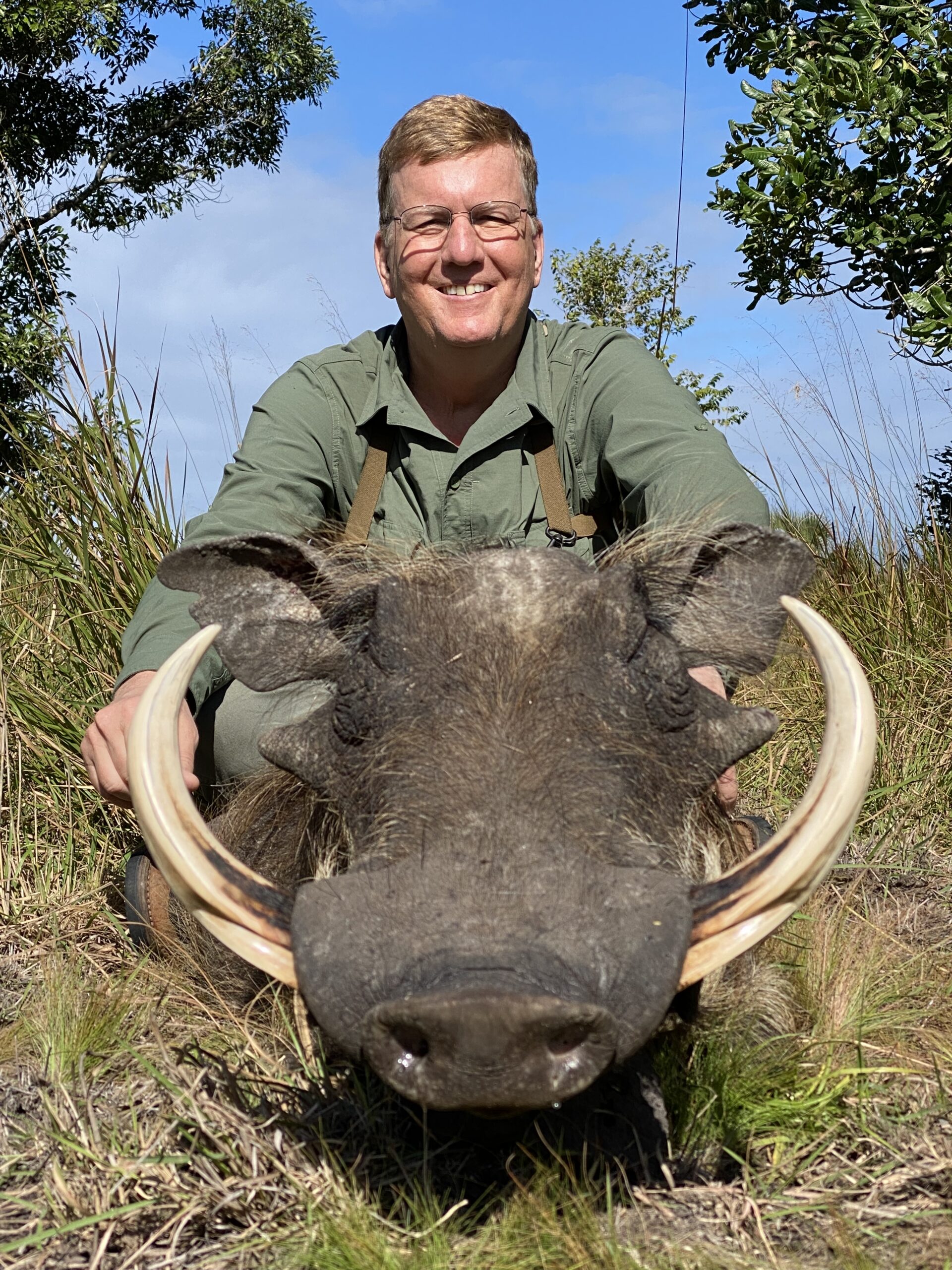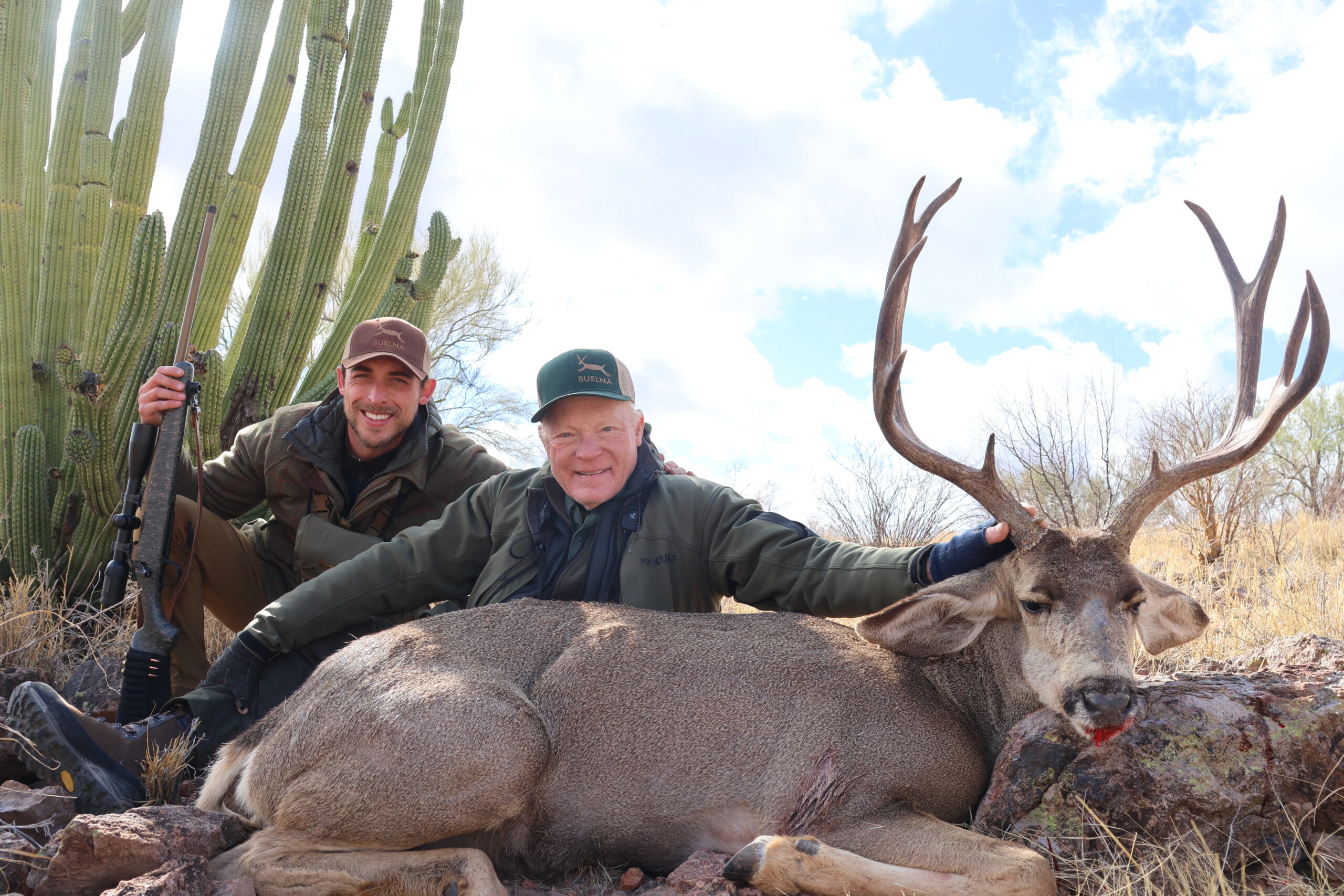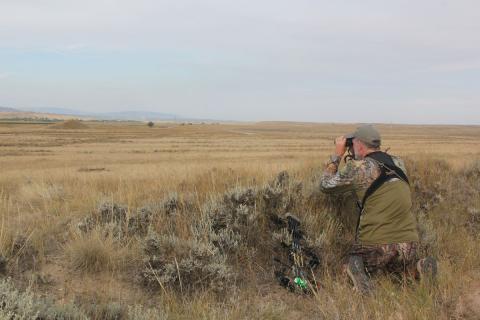
On a sunny, warm late August day in 2018 I was bowhunting pronghorn near Douglas, Wyoming with my friends Scott Denny, head honcho at Table Mountain Outfitters, and videographer extraordinaire Big Kelly Lee. I’ve done this hunt several times, always from a ground blind over a water source, and always killed a good buck on film, never in more than three days. For the pronghorn bowhunter, this combination is the best way possible to get a controlled shot at a calm buck at close range.
So when Scott asked me the afternoon before the hunt was to begin, “You wanna sit in a blind all day with Kelly, or do you just wanna go find and good buck and sneak up on him?”
Well. I’ve spot and stalked pronghorn off-and-on since the 1980’s, with varying degrees of success. In the old days I was both inexperienced and clumsy, and mostly blew the stalks before I ever thought about getting into range. I learned early on that to make this work you needed the right terrain and, most important, a lot of animals so that when you messed it up, you could go find another one and get back in the game.
Scott has both on his leases, so off we went. To make a long story short, we found a really good buck early on, but he got onto us, so a few hours later we found another, and that time, after making a big circle and using an old drainage ditch for cover, I was able to get within 58 yards of him. The shot was perfect, and he ran maybe 200 yards before piling up.
You shot him how far away, you ask? Isn’t that too far to be ethically shooting an arrow at a game animal?
Equipment Then And Now
Back in 1993 I wrote a column for Field & Stream magazine entitled “How Far Is Too Far?” Re-reading it reminded me of several things. For one, the debate on how far a bowhunter should ethically take a shot at a game animal is not a new one. For another, the change in equipment between then and now is stunning. Back then I talked about compound bows shooting hunting arrows at a “blistering” 220 feet per second (fps), and solving the range estimation problem by using such revolutionary products like the Ranging 50/2, 80/2, Eagle Eye 3X (the 80/2 with a 3X eyepiece), and TLR 75. Those were the first commercially-available rangefinders that incorporated the coincidence system, where you looked through the eyepiece and saw two images of the same object. When you turned the unit’s dial the images merged together to become one, where they were said to be in “coincidence.” A dial then theoretically showed you how far away the target was.
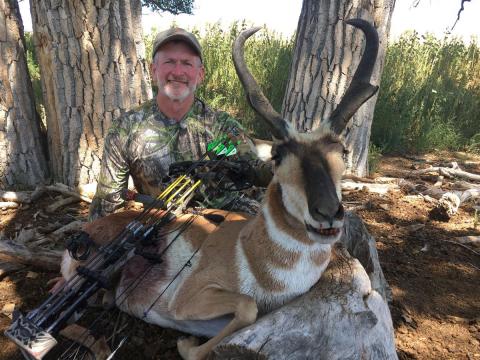
To say those units were mediocre is a monstrous understatement. The readings were close, but by no means precise — and even if you were skilled in their use, they were useless out past 40 yards or so. I still have a couple of them, and comparing one to any of today’s laser rangefinders is apples and oranges. Thus, back in the day the discussion about how far was too far ended at 40 yards — and that was only for the most accomplished archers. For everyone else, 25 yards was considered the end of the earth. And that’s on flat ground, since the old rangefinders did nothing to help you adjust your aim when shots were taken at steep uphill and downhill angles.
Fast forward to 2019. It’s not uncommon for a compound bow to launch an extremely precisely-made, small-diameter carbon hunting arrow shaft tipped with an equally precisely-made low-profile mechanical broadhead at 300 fps, or more. Instead of fingers we loose the arrow with a release aid and aim with a bow sight that’s machined to NASA-like specifications. Arrows fly with virtually no side-to-side wobble, making tight groups at much longer distances a reality. And modern crossbow manufacturers now advertise themselves with slogans such as “Meet Your Next Rifle” and being able to produce sub-MOA accuracy at 100 yards. Some of the latest crossbows launch their arrows at initial speeds of over 450 fps!
There’s A Big Difference
Still, there’s a huge difference between shooting an arrow at a target and a living, breathing creature whose actions are as unpredictable as the financial markets, just as there is a huge difference in the skills of each and every bowhunter. Over the years I’ve been around some of the best archers on earth. In 1984 I worked the summer Olympic Games in Los Angeles where I watched America’s Darrell Pace and Rick McKinney win gold and silver, respectively.
My friend Rick Bednar, now the president of TenPoint Crossbow Technologies — makers of the TenPoint, Horton and Wicked Ridge crossbows lines (TenPoint’s new Nitro XRT crossbow sends an accurate arrow off at 470 fps) — was a three-time NCAA champion and qualified for the 1976 Olympic team. With both a compound bow and crossbow the man can shoot a gnat’s eye out at distances that would amaze you. He’s also a very serious and highly-accomplished bowhunter with both. And yet, Rick is the first to tell you that the recent long-distance shooting craze is bad for bowhunting.
“We have tested our crossbows from 0 to 60 yards in hunting conditions and 10 to 100 yards in target shooting conditions,” Bednar says. “All of our test results are
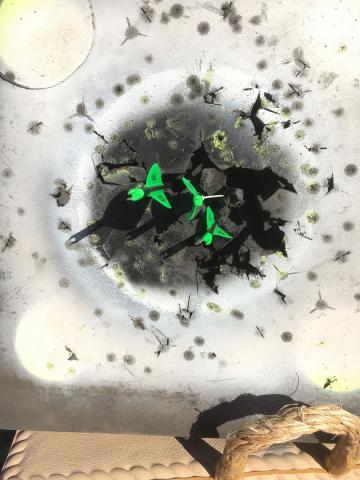
consistent with claims other manufactures make and we have duplicated similar or better results. However, in all cases our company recommends shooting your crossbow (regardless of the brand) at distances of 60 yards or less for hunting. At these yardages, we are confident you will be as successful, as you are personably capable, in your shot execution and given environmental conditions.”
Technology Is Great, But …
All this new technology is wonderful, and makes it so much easier to get the most out of your own shooting ability. I shoot my compound bows a lot, and use a 7-pin bow sight with my sight pins set at 10-yard increments from 20 to 80 yards. When I’m shooting well on a calm morning, I can hit the 4-inch diameter top to a Big Gulp cup pretty much every time at 80. I also have a crossbow with which, from a bench on a calm day, I can drill this same four-inch top most every time at 100 yards.
In the field, though, there are plenty of variables to contend with. Those include environmental conditions – wind, sun angle, how much daylight there is, how much brush and other flora is in the way, and whether the shot is on flat terrain or a steep uphill or downhill angle – and the animal itself. Is it calm or alert? What kind of shot angle is it giving you to the vitals? Is it a large, tough critter that requires a lot of momentum and kinetic energy at the target for the arrow to penetrate deeply? What are the odds that the animal will move even a little bit in the time it takes for the arrow to get there?
Establish Your Own MESR
Long ago I coined the term “Maximum Effective Shooting Range”, or MESR. Essentially, I wanted to know how far out I could consistently place my hunting arrow inside a 6-inch circle, which is a tad smaller than the 8-inch diameter of the average North American whitetail deer’s heart/lung vital area. To do so I would test myself in five-yard increments. I’d start at 20 yards and shoot five arrows at a 6-inch bull’s-eye. If I placed all five arrows in the circle, I’d move back five yards, and do it again. And so on, and so on, until I reached a distance where I could no longer get it done. At that point I’d move five yards closer and, if I could make the five shots, call that my MESR under perfect conditions.
Next, I’d start over and shoot from my knees, then from the chair I use in a ground blind, and a tree stand seat. The entire process takes several range sessions, but at the end of the day I had a great idea what my own MESR was under a wide range of conditions.
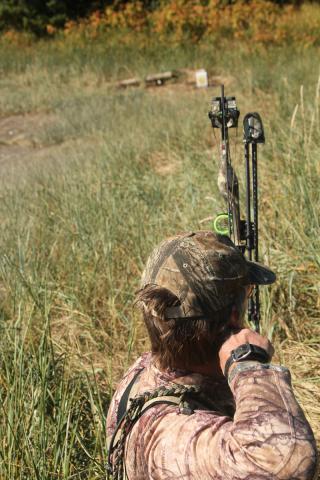
Try it with your hunting buddies, and one thing you’ll find is there is a difference between individuals. Just like any athletic endeavor, consistent practice is paramount to improvement, and individual skill levels vary. That’s why it doesn’t matter what anybody else does. It only matters what you do.
And So, How Far Is Too Far?
And so, hitting that little 6-inch circle during MESR practice sessions is not the same as trying to kill one of God’s magnificent creatures. For one thing, there’s no buck fever to contend with. To me, bowhunting is all about getting in their face, using skills I’ve developed over a lifetime to close the distance until I’m closer than half a football field away — and preferably closer. Even then, unless everything’s right — I know the exact distance to a calm animal, the winds are stable and I have a steady platform — I won’t shoot. One thing I would never, ever do is launch a Hail Mary that might hit the animal in the vitals. In my world, it’s better to walk away than risk wounding that animal. And I’ve walked away a lot.
Bowhunting, the sport we all love, and the magnificent animals we hunt, both deserve our complete respect. I’m no Darrell Pace, or Rick McKinney, or Levi Morgan, or Rick Bednar. Like Dirty Harry said, “A man’s gotta know his limitations.” I do. And so should you.–Bob Robb


